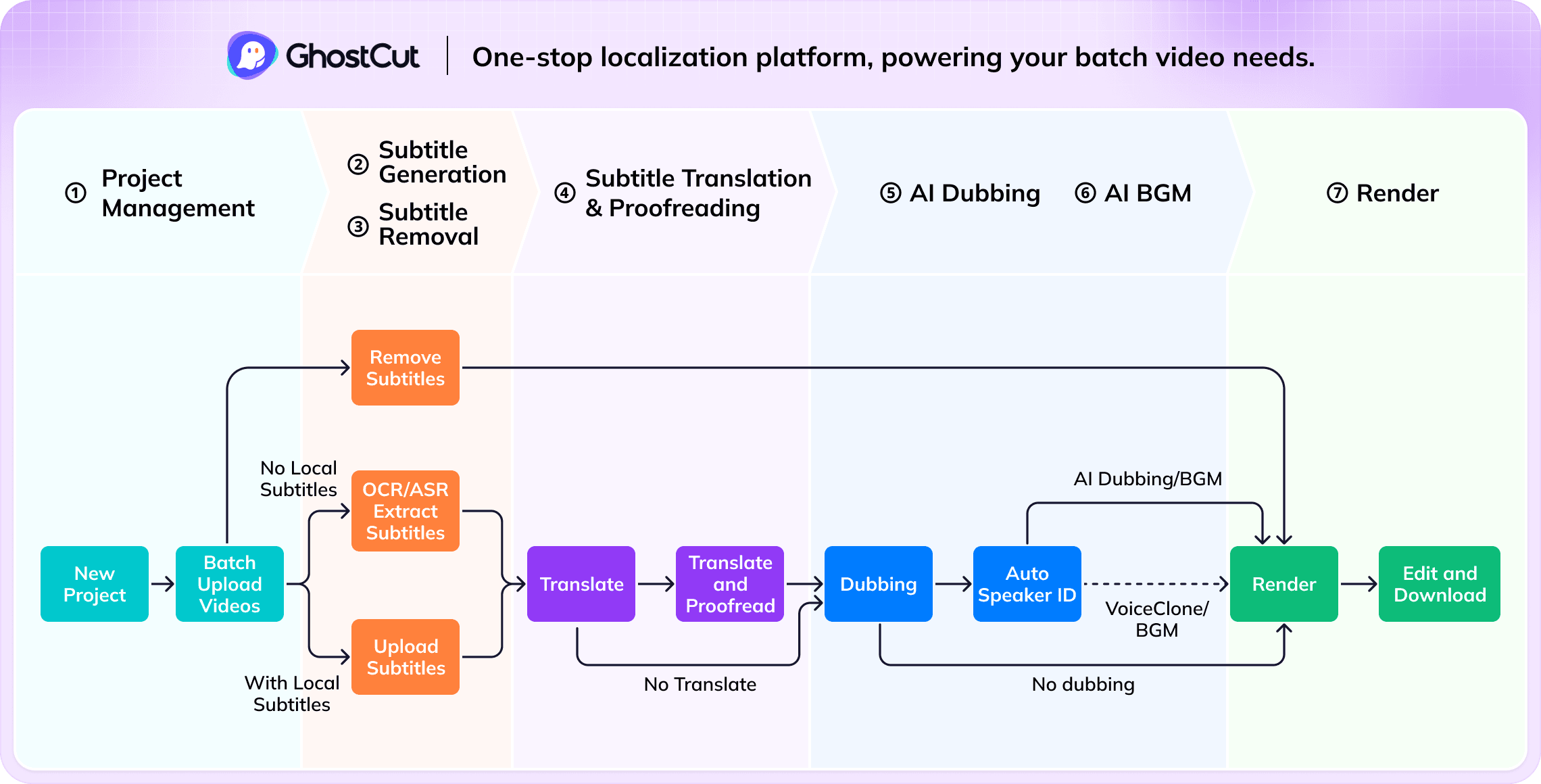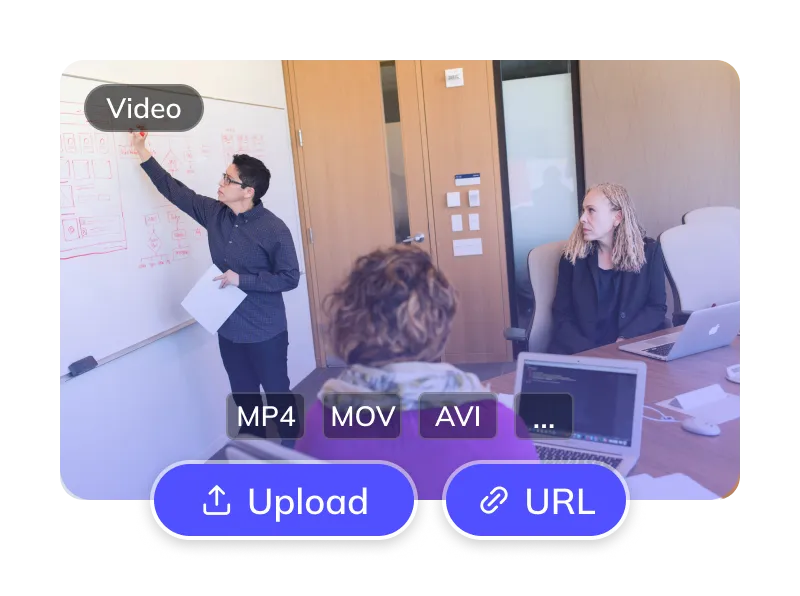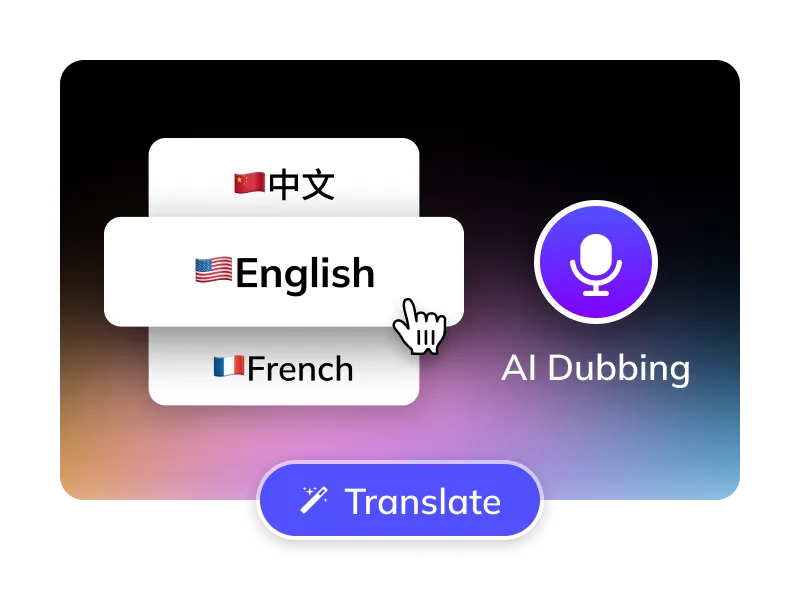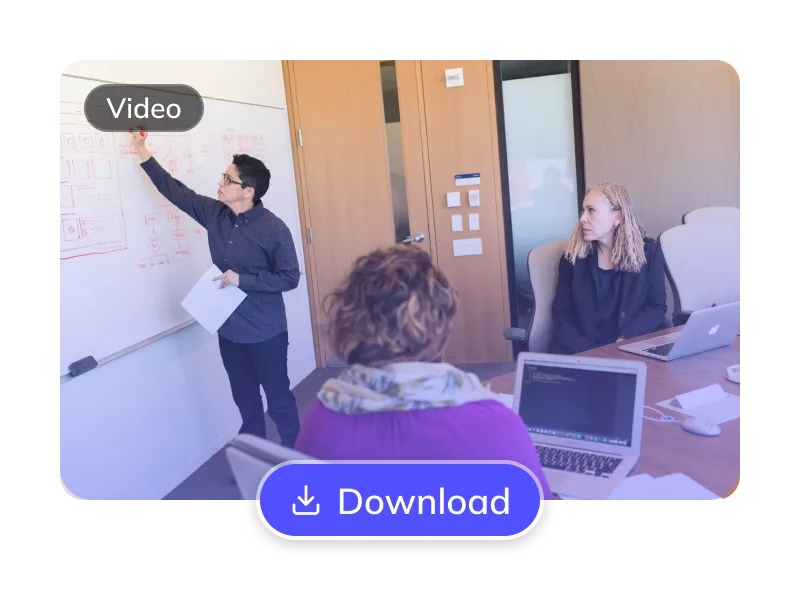How to Translate Japanese Videos to English ?
Translate Japanese Videos to Traditional-Chinese in 3 Easy Steps
Trusted by 1,500,000+ Global Creators and Businesses
Why GhostCut for Your Video Translations?
GhostCut is your all-in-one AI solution for translating Japanese content into natural, engaging Traditional-Chinese.
Effortless Project Management
Manage Japanese assets, subtitles, & Traditional-Chinese videos. Batch process projects efficiently.
Pinpoint Traditional-Chinese Accuracy
Up to 99.5% accurate. Optimized for Japanese-to-Traditional-Chinese with LLM calibration & multi-agent review for culturally fluent Traditional-Chinese translations.
Lifelike Traditional-Chinese AI Dubbing
Choose from diverse, human-like Traditional-Chinese AI voices (US/UK accents). Emotion-cloning technology captures original tone for natural Traditional-Chinese delivery.
Flexible Japanese Subtitle Options
Optionally erase original Japanese hardsubs for a clean slate. Translate embedded Japanese subtitles directly.
Smart Multi-Speaker ID (Japanese)
AI detects multiple speakers in Japanese videos. Assign or clone distinct Traditional-Chinese voices per character, with cross-episode consistency for complex Traditional-Chinese dubs (dramas, interviews).
Efficient Batch Processing & API
Batch translate and dub 100s of Japanese videos to Traditional-Chinese at once. Seamlessly integrate with our robust API.
Versatile BGM Control
Keep or mute original BGM. Our unique tech can also isolate sound effects, meeting diverse copyright and distribution needs.
Unbeatable Value
Flexible Japanese-to-Traditional-Chinese plans. Try core features free. Automated pro service from just $0.1/minute.
Easy Online Access
No downloads. Instantly translate Japanese videos to Traditional-Chinese online. Works on Windows, Mac, & major mobile browsers for cloud processing anywhere.
The GhostCut Edge: Unmatched Accuracy, Speed, and Value.
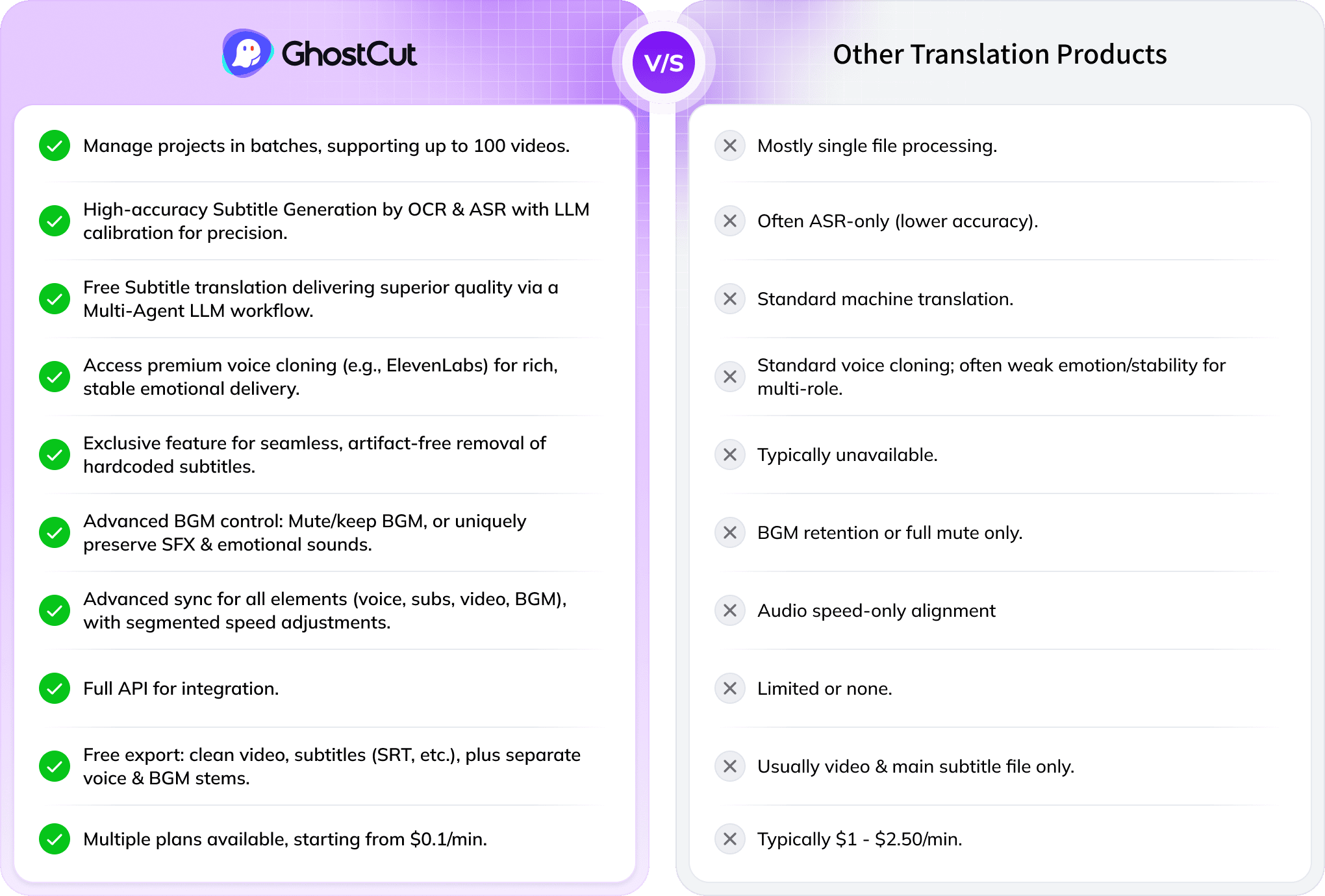
Every Algorithmic Optimization, Engineered for Quality Traditional-Chinese Video
Mastering Long-Form Japanese Drama & Multi-Character Dubbing
Translating a 100-minute Japanese drama with 4000+ lines and many characters into Traditional-Chinese is tough. Standard AI struggles to tell speakers apart, causing errors. GhostCut’s multi-modal AI (video, voice, text) excels in long-form, multi-speaker content, ensuring accurate, consistent character voices across entire series.
Translate Now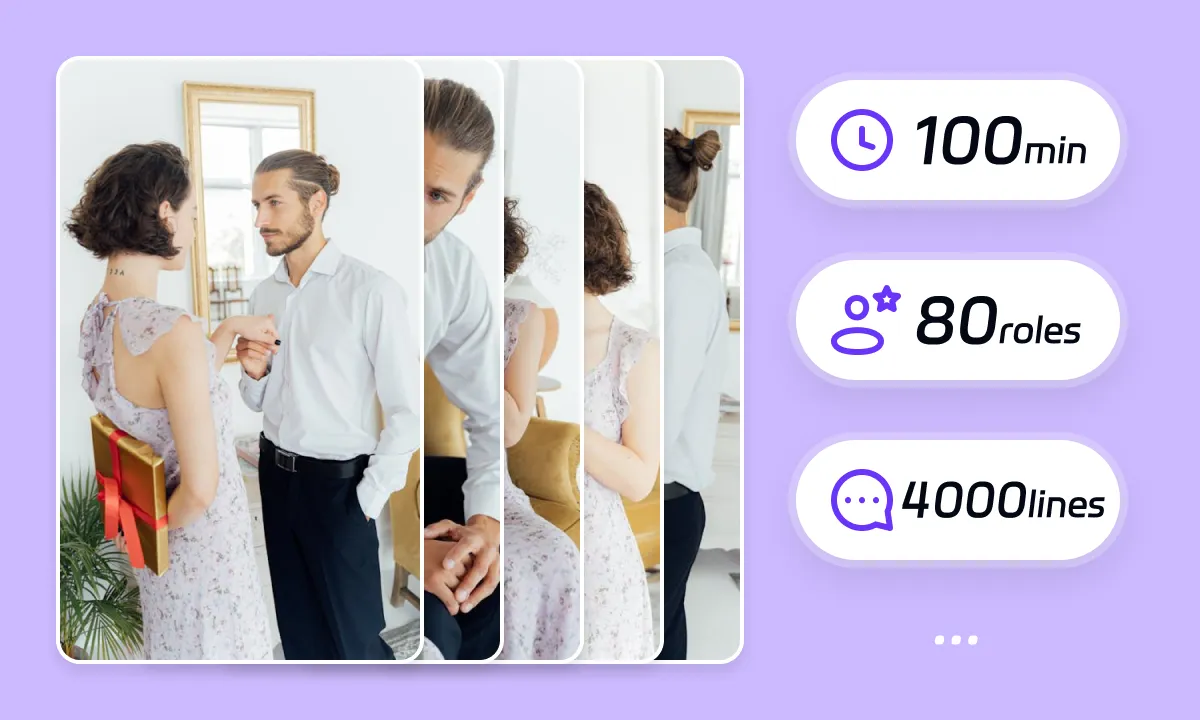
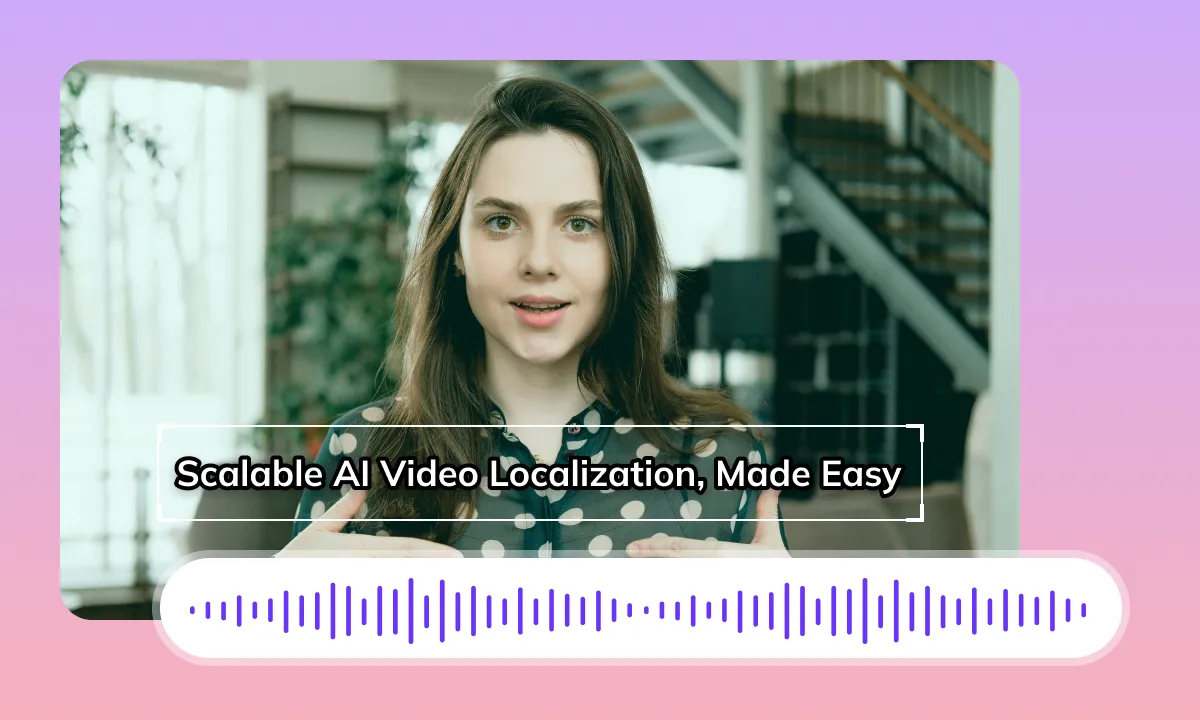
Seamless Traditional-Chinese Dubbing & Perfect Lip-Sync
GhostCut ensures natural Traditional-Chinese audio flow by treating related subtitles as whole ideas for TTS. It then precisely times new Traditional-Chinese subtitles. Since Japanese-to-Traditional-Chinese translation can change speech length, our AI expertly adjusts the new Traditional-Chinese audio, subtitles, video, and BGM to maintain perfect sync, just like a seasoned editor.
Translate NowBoost ROI with Flawless Japanese Subtitle Removal
Original Japanese hardsubs can limit your video's global appeal. GhostCut’s AI doesn't just blur; it intelligently reconstructs the background obscured by Japanese subtitles, even complex ones, for a perfectly clean, high-quality visual. This means better viewer engagement, longer watch times, and higher ROI.
Translate Now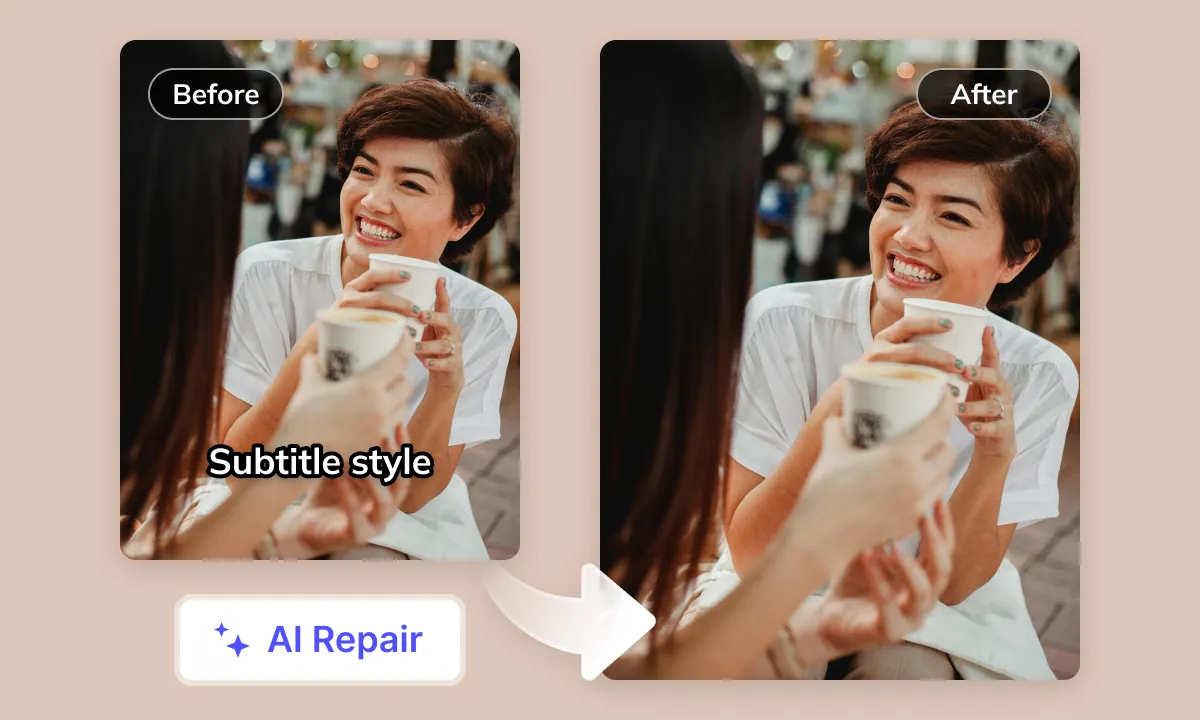
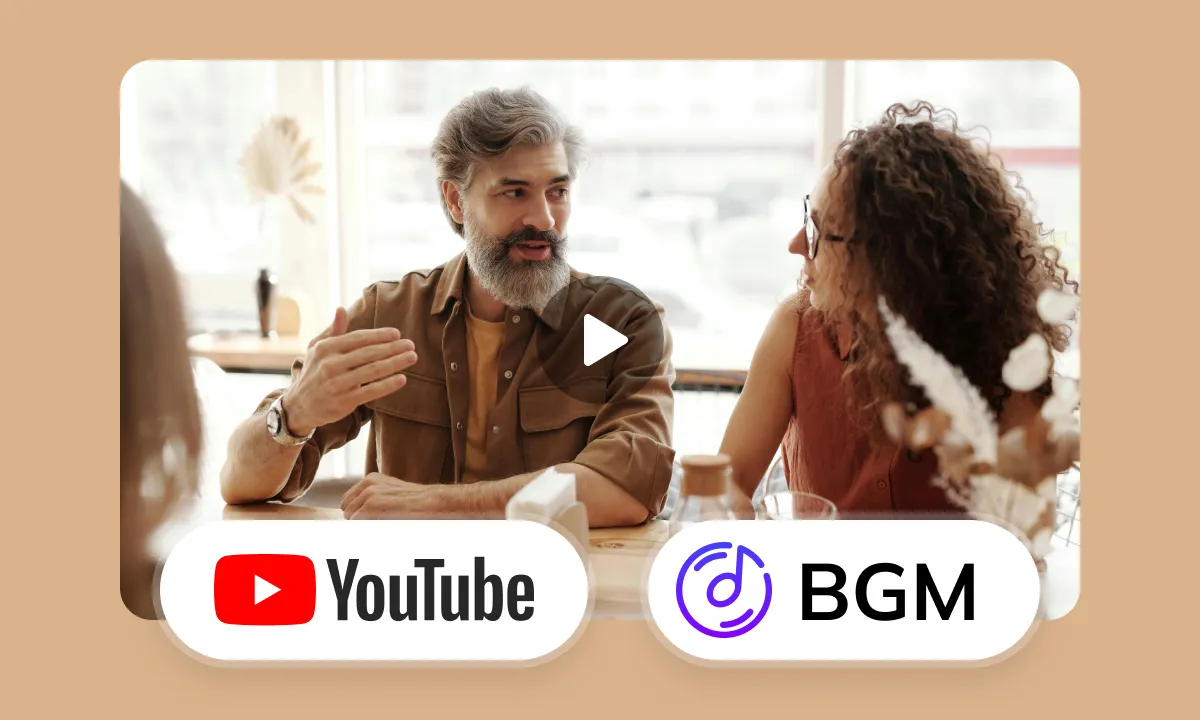
Smart Audio Control for YouTube Creators
Navigating BGM copyright on YouTube is tricky. GhostCut’s advanced audio separation isolates Japanese dialogue for translation, while intelligently managing BGM, sound effects, and even emotional expressions. Our "Keep SFX, Remove Music" option is a creator favorite for avoiding copyright issues without losing your video’s impact.
Translate NowLanguage barriers prevent many great Japanese videos (like anime, vlogs, and culture) from reaching the large Traditional Chinese audience
Excellent Japanese video content, like anime, vlogs, and cultural tours, struggles to reach the large Traditional Chinese-speaking audience due to the language barrier. The lack of quality translations or dubs limits viewership and engagement, creating an urgent need for professional AI-powered localization solutions
Japanese to Traditional Chinese Translation: Challenges and Analysis
Handling Original Audio Embedded Subtitles
When translating original Japanese videos with fixed Japanese hardcoded subtitles or Japanese voiceovers into Traditional Chinese, it's crucial to consider how to manage these elements to avoid disrupting the viewer's experience
Cultural, Grammatical, and Lexical Differences
Japanese features a unique honorific system, ambiguous expressions, and numerous loanwords. Its sentence structure and idiomatic expressions differ significantly from Traditional Chinese. Many Japanese terms have homographs with different meanings in Traditional Chinese. Accurately conveying the original meaning while considering cultural context is a key challenge
Subtitle Space Layout Considerations
Japanese, with its mix of Kanji, Hiragana, and Katakana, differs from Traditional Chinese (primarily Kanji-based) in visual density and spatial occupation. When translating to Traditional Chinese, careful consideration of characters per line and line breaks is essential to ensure subtitles are clear, uncluttered, and easy to read
Speech Rate Duration Matching
Japanese and Traditional Chinese may differ in sentence length and speech rate when conveying the same information. When translating and dubbing Japanese audio into Traditional Chinese, maintaining duration match with the original video and achieving audio-visual synchronization presents a significant technical challenge
Japanese AI Speech Recognition Accuracy
Japanese includes various dialects, rapid continuous speech, and often features multi-speaker dialogues or complex background noise, all of which significantly reduce the accuracy of Japanese AI speech recognition and impact subsequent translation workflows
Scarcity of High-Quality Traditional Chinese AI Voices
While the selection of Traditional Chinese AI voices is growing, high-quality AI voices that can naturally express emotion and tone, with fluent and non-robotic pronunciation, remain uncommon
Precise Lip-Sync Requirements
Japanese and Traditional Chinese have systematic differences in their pronunciation mouth shapes. Achieving a high degree of lip-sync accuracy between the dubbed audio and the original video characters requires highly precise technical adjustments
Ideal AI Translation Workflow Standards
An ideal Japanese to Traditional Chinese AI translation workflow should include: high-accuracy Japanese speech recognition - culturally, grammatically, and lexically authentic Traditional Chinese translation - fluent, natural, and highly lip-syncing Traditional Chinese AI voiceover - automated timeline alignment and editing
Tackling Video Translation Challenges with AI Empowering your Japanese content for any worldwide scenario.
Your All-in-One AI Translation Studio
GhostCut offers more than just Japanese-to-Traditional-Chinese translation. It's a complete AI-powered workflow: subtitle extraction 、 removal 、 translation and proofreading to multi-character dubbing , BGM processing, and final rendering. Go from Japanese source to global-ready videos, effortlessly.
